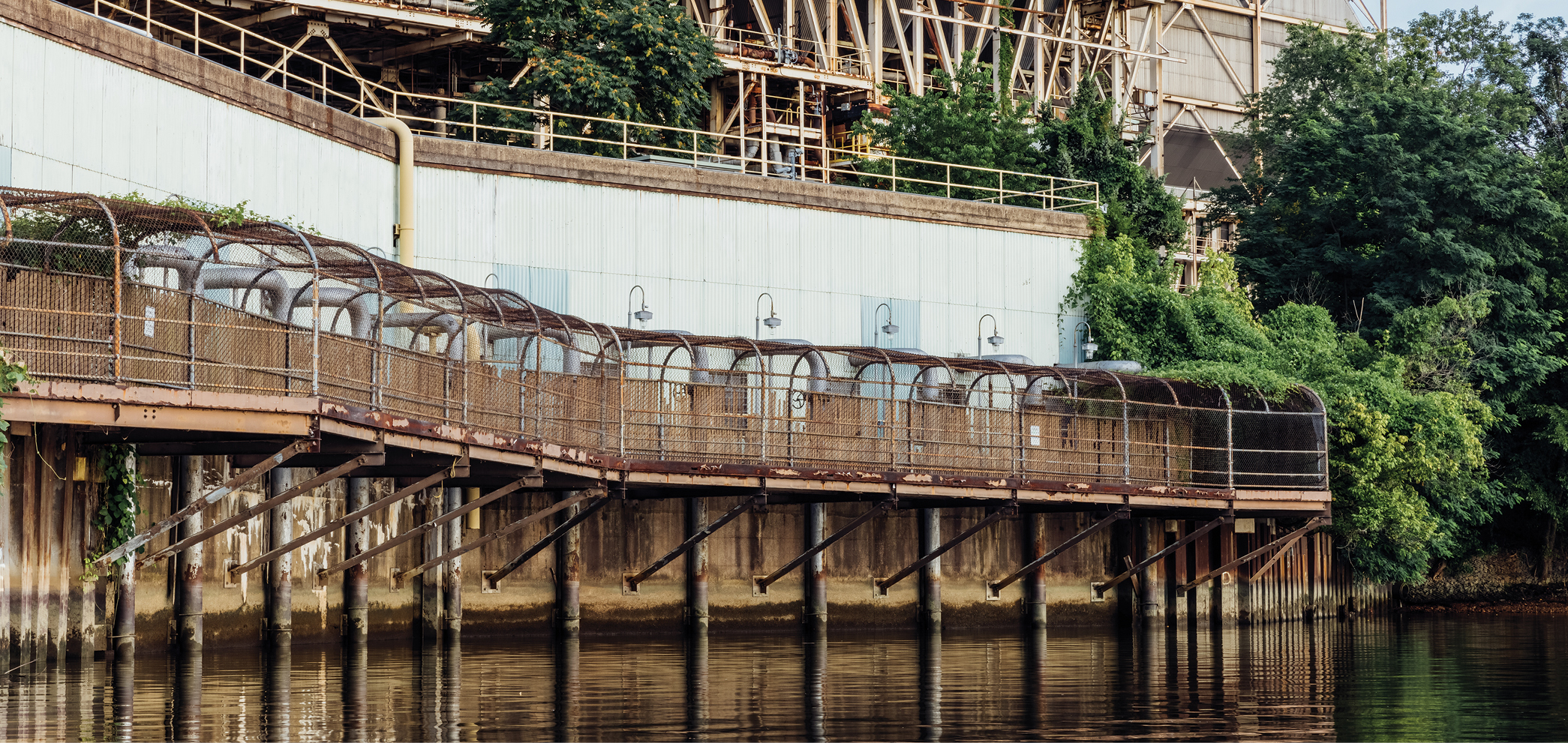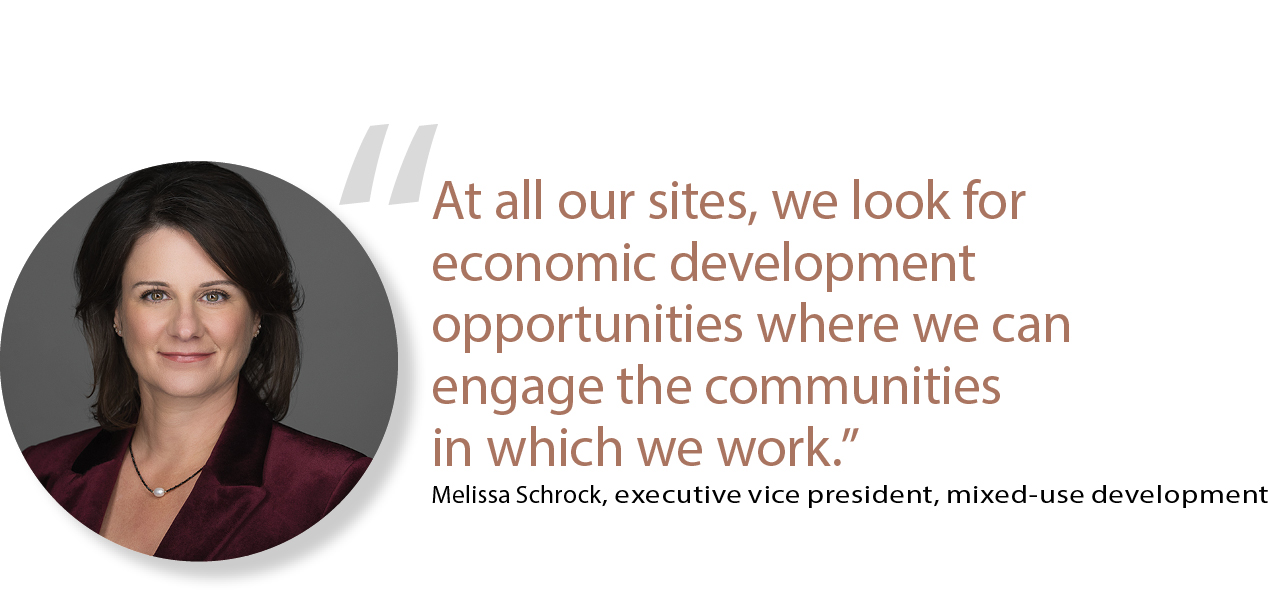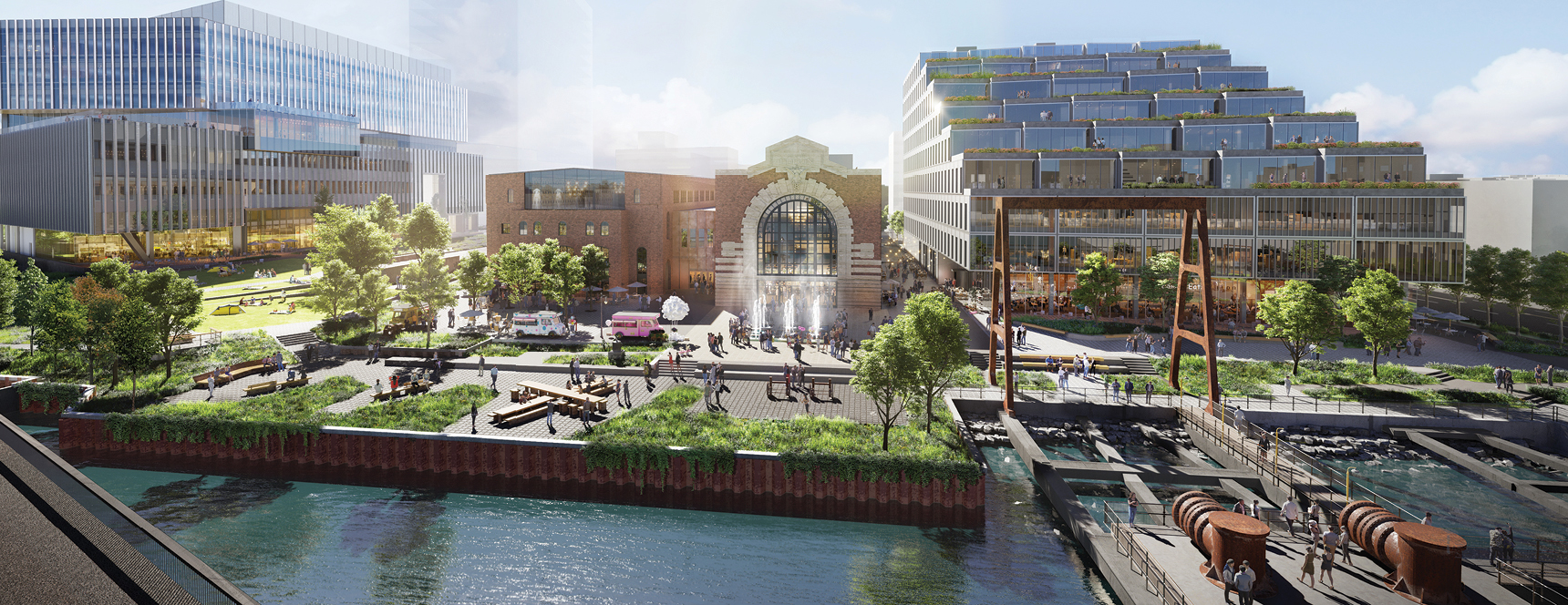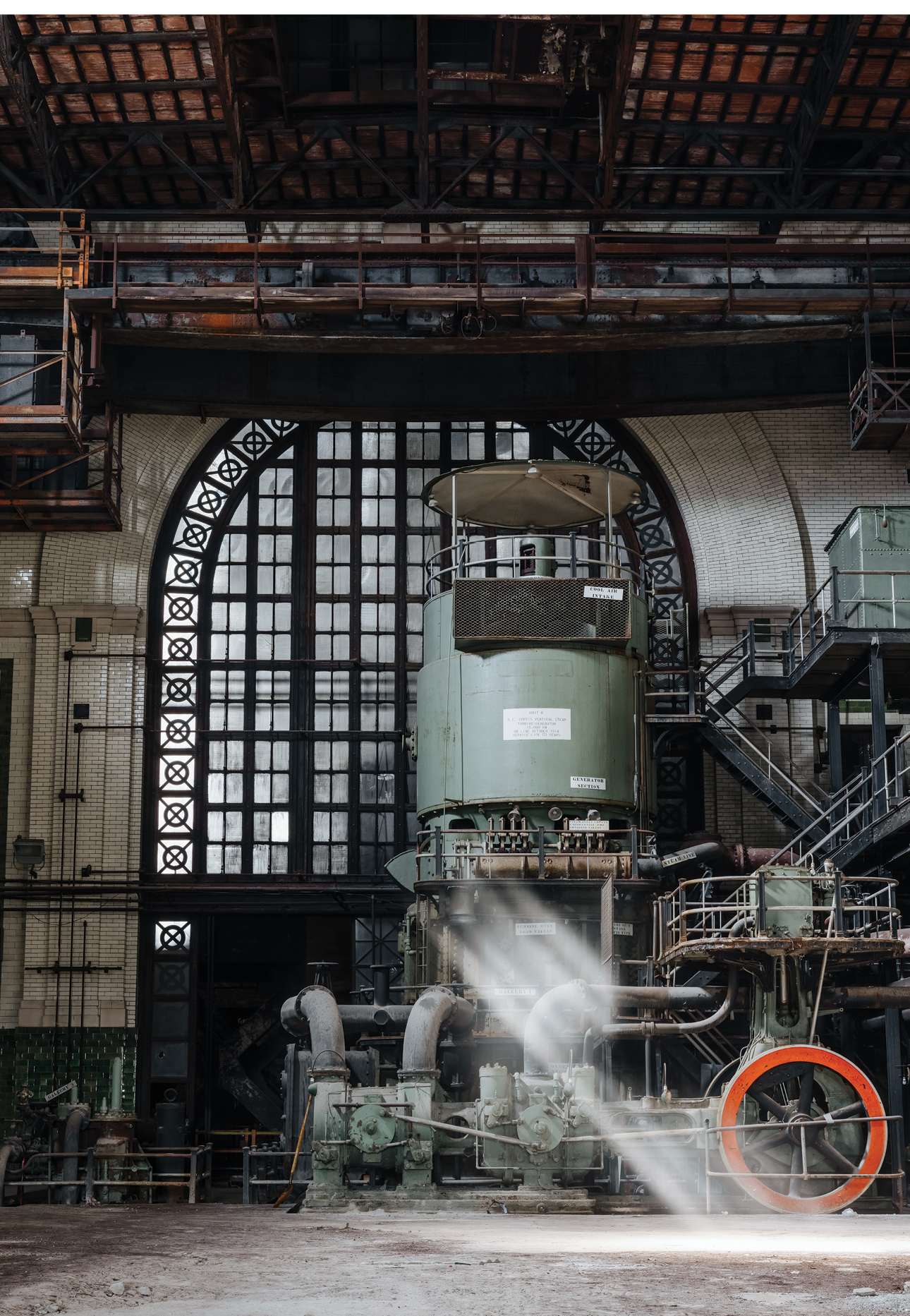It’s one thing to purchase and redevelop a property in the hope that new tenants will find it suitable for their operations. It’s quite another to purchase old industrial sites and redevelop them so their tenants and the communities they are in can meet their sustainability objectives. That’s the role Hilco Redevelopment Partners (HRP) is playing in Boston, Chicago, Philadelphia and other locations nationwide, where former coal-fired power plants, refineries and other defunct facilities are being redeveloped into a multitude of projects that help occupants and the neighborhoods they are in achieve their sustainability goals.
“There are several examples of where we’ve built cutting-edge, sustainable projects that the tenant market has found to be very attractive,” says Melissa Schrock, HRP’s executive vice president, mixed-use development. “One is in Chicago, where we built a distribution facility for Target, which is the largest LEED-certified, green industrial building in Illinois. It responds to our sustainability goals as a company, what cities and states want and what tenants are requesting as well.” The former Crawford Power Generating Station site is now a nearly 1-million-square-foot warehouse and distribution center for the retailer that employs about 2,000 people.
Another example is HRP’s upcoming project in the Old Town North neighborhood of Alexandria, Virginia, on the site of the former Potomac River Generating Station (PRGS). A former coal-fired powerplant, the PRGS was once the largest polluter in the area before being decommissioned in 2012. The site, which is immediately adjacent to a major electrical substation with subsequent easements crisscrossing the property, remains one of the largest industrial sites in Alexandria. In 2017, the Alexandria City Council approved the Old Town North Small Area Plan, which includes the PRGS site, and further expressed the city’s commitment to creating sustainable and livable communities. The site is just south of the new Amazon headquarters in Arlington, the new Virginia Tech Innovation Campus and Reagan National Airport.
Sustainability Blueprint Required
HRP is working closely with the City of Alexandria, community members and other stakeholders in the coming months to collectively reimagine the former industrial site as a thoughtful mixed-use development that benefits the community and becomes a source of pride for the city. HRP acquired the site in 2020 and was required by the city to submit a Coordinated Sustainability Strategy that included options for onsite energy generation among other provisions.
These include, according to a May 16 report in the Washington Business Journal, “3% on-site renewable energy generation; reporting of buildings’ energy use to the city government for five years after occupancy; ‘embodied’ and ‘operational’ carbon reductions, meaning reductions in carbon emissions owing to materials and construction, as well as to operating the building, such as through heating and cooling; stormwater and transportation infrastructure improvements; new open spaces; and site-wide LEED certification.”
This collaborative planning between The City of Alexandria and HRP was recently recognized by the Virginia Chapter of the American Planning Association (APA Virginia) who awarded the 2023 Red Clay Development of the Year Award in anticipation of the redevelopment of the site. What makes HRP’s holistic redevelopment strategy award-worthy is that they know how to tailor their approach for each unique site in their portfolio—the process of transformation for the Alexandria site won’t necessarily work elsewhere.
“Sustainability requirements vary greatly between cities and states,” notes Schrock. “States like Massachusetts and California are very much at the forefront of requirements like these. They may be out ahead of what tenants are looking for. In other cases, tenants have made corporate sustainability commitments, and no matter where they locate, they want to push the envelope.”
Schrock says sustainability is a core principle at HRP in terms of the environment, the economy and the community. “The Coordinated Sustainability Strategy we created for Alexandria was the first of its kind,” she points out. “It’s a document with in-depth analysis of what is feasible on that site, and it was endorsed by the Planning Commission, City Council and Environmental Policy Commission for Alexandria, which is a volunteer board of community members that participates in the development review process. We were very proud to hear these authorities refer to it as the gold standard and note that in Alexandria, all developers should be required to do this. We believe tenants will respond positively as well.”
Buildings that save energy help the end users, says Schrock. They benefit the environment and the community by reducing their carbon footprint, but they also reduce the users’ operational costs. In the case of HRP’s project in Alexandria, those users will largely be residents who will benefit from the energy savings the buildings afford.

All photos courtesy of Hilco Redevelopment Partners
Community Outreach
Residents and retailers are part and parcel of most mixed-use developments – and they are the lifeblood of the locations they call home. How is their input factored into HRP redevelopment projects?
“HRP has probably one of the most well-developed community outreach strategies of any commercial real estate developer around,” says Schrock. “We get to know the communities within which we are working. We have a lot of meetings and are incredibly transparent. We post all our materials on our website. If you can’t attend a community meeting, you can watch the recording, you can download the presentation. We respond to questions in writing, and we put those documents on our website.”

“We recognize that these sites are in locations where the abutting neighbors for generations had to deal with sources of pollution within their communities,” she adds. “Now they see the neighborhood transforming, and they’re normally happy about that. They want to learn more about the project and how sustainable it will be. It’s about communication and also education. It’s about educating people about what is technologically feasible. We’re pushing that envelope at all our projects, but there can be case-specific limitations that we have to be responsive to. It’s about keeping the lines of communication open and making sure we collaborate with our neighbors.”
The PRGS site in Alexandria had sat idle for 10 years, Schrock relates. “There was an enormous amount of community advocacy there to close the plant, and now that community is very engaged in seeing what the site will be redeveloped into.”
Three Measures of Sustainability
HRP’s three pillars of sustainability – environmental, economic and community – are in play at all stages of the redevelopment process. Abatement, remediation and demolition are about HRP removing the vestiges of fossil fuel based technology and improving the environment. Air quality is improved with the former facility no longer in operation; soil and ground water remediation clean the environment.
Economic sustainability?
“Many of these sites were occupied by single employers,” says Schrock. “When we redevelop them, many times the result is multiple employers in different industries. That provides economic resiliency in communities because you have a much broader employment base and a deeper ladder in terms of skill sets. In Philadelphia, we’re developing logistics facilities but also life sciences research and development facilities. The employment opportunities will be significant and will involve everyone from truck drivers to scientists.”

The Bellwether District, HRP’s Philadelphia redevelopment, reimagines the former PES refinery into a 1,300-acre state-of-the-art campus that will be home to some of the world’s top businesses and is estimated to create over 19,000 direct, permanent jobs. HRP has begun the remediation to transform the property into a green, sustainable development and economic engine for all of Philadelphia. It will be the city’s new hub for e-commerce, logistics, life sciences, and innovation leaders. HRP says it will be a global model of sustainable development and design, connecting the world’s seas, skies, rails, and roads to the people and businesses of Philadelphia.
“From a community standpoint,” says Schrock, “we invest in the site, and we invest in workforce training. At all our sites, we look for economic development opportunities where we can engage the communities in which we work.”

Bottom Line Benefits
HRP says the locations of its projects are financially advantageous to end users because they are in markets with strong labor pools, which facilitates access to talent. Industrial end users, because of the nature of the former sites, benefit from their access to transportation infrastructure. While every project is unique, HRP identifies sites with these similar characteristics that enable companies to maximize the potential of once obsolete sites, making them hubs of economic opportunity for their respective community.
“Almost all our sites are adjacent to water, which was historically used for cooling purposes,” says Schrock, “and sites like The Bellwether District are proximate to ports. That provides tenants with options for distributing their products. They are sustainable in that if they have access to transportation infrastructure close by, they’re reducing their carbon footprint by being more efficient bringing in the materials they need for manufacturing and in distributing them.”
Companies today are laser focused on their environmental, social and corporate governance (ESG) goals, notes Schrock. “Investing in sites like HRP’s shows a long term commitment to achieving those goals coupled with their sustainability and resiliency goals.” By focusing on sustainability that prioritizes not just a greener environment and state-of-the-art facilities but also on creating long-term jobs, HRP is showing how developers can help businesses and communities meet their environmental objectives and build a healthier, more prosperous future.
This Investment Profile was prepared under the auspices of Hilco Redevelopment Partners. For more information, visit www.hilcoredev.com.

